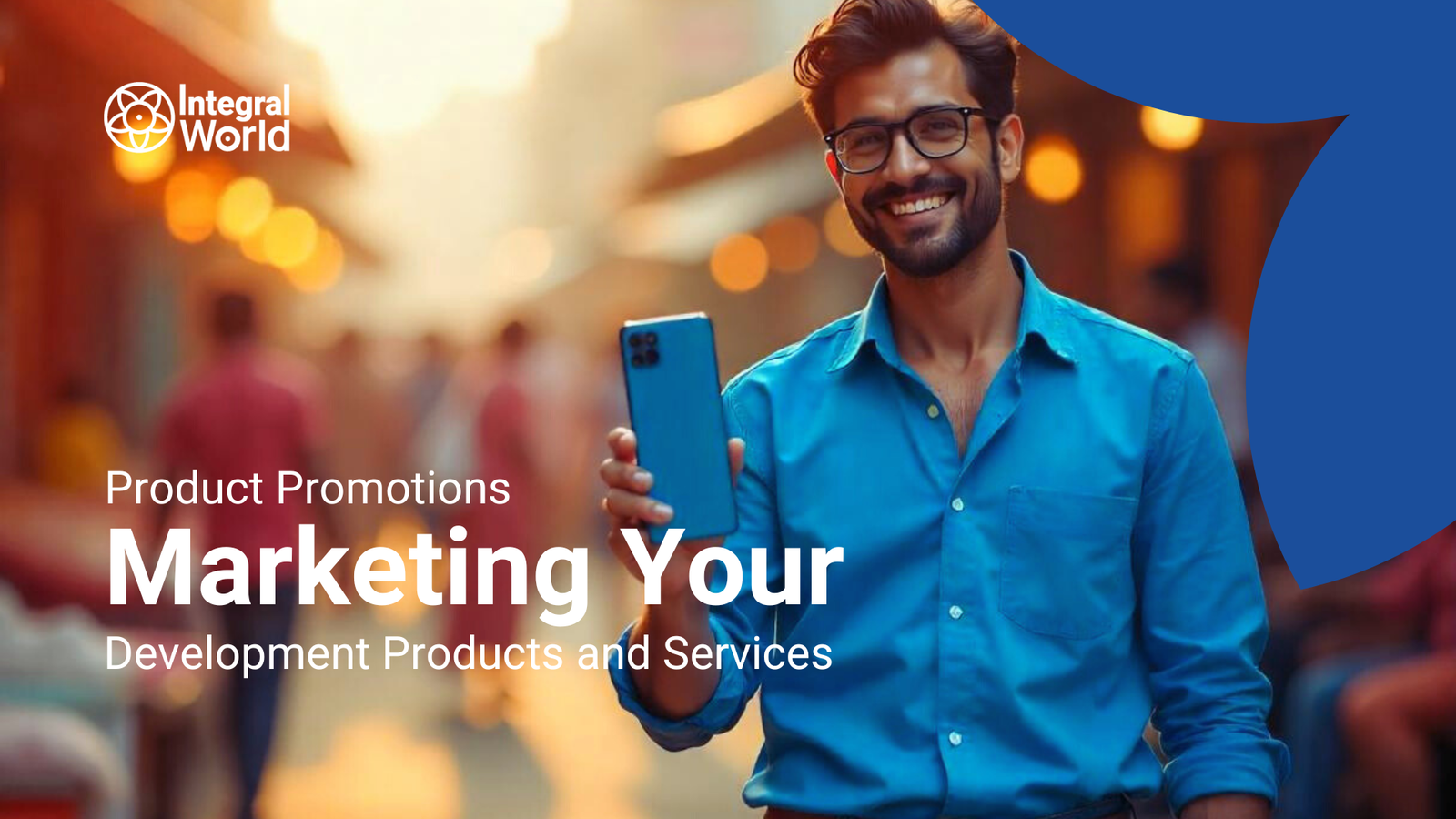For non-profit organizations to achieve their missions and drive social change, promoting products and services effectively is crucial. A deep understanding of the communities we serve is how successful product promotions begin at Integral World.
Organizations can increase their impact and visibility by identifying key development issues and responding to them through customized solutions. This article examines how organizations can market their development products and services effectively with step-by-step guidance, case studies, and insights from industry experts. We want to establish Integral World as a thought leader in the identification and resolution of development problems.
Understanding Community Needs
The first step towards promotion of development products and services is an understanding of specific needs and challenges that target communities face. This requires extensive research as well as active involvement with community members.
Step-by-Step Guidance
Conduct Community Assessments
Gather data on the needs, preferences, and challenges of a community using surveys, focus groups, or interviews.
Analyze data to determine key problems that can be addressed by your products or services.
Engage with Community Leaders
Create relations with local leaders or stakeholders in order to get deeper insights into the community as well as build trust.
Through their knowledge and influence learn about specifics dynamic in the community such as its needs.
Map Out Key Issues
Develop a detailed map showing major areas where research has exposed issues of concern in human advancement.
Prioritize these areas based on urgency as well as potential effects that may come from your goods or solutions offered thereupon.

Developing Tailored Solutions for Product Promotions
After understanding what the community wants you should then move ahead to address those concerns effectively using your products or services.
Step-by-Step Guidance
Design Products and Services
Have your offerings tailor made for direct response towards the already identified needs within a given population. They should be culturally relevant being inclusive enough for all people involved in them whatsoever they are meant for.
Work together with local partners as well as stakeholders to improve your products or services.
Pilot Programs
Test the viability of your goods within a real context by first making use of the pilot programs.
From participants in these programs, listen and make any necessary adjustments.
Measure Impact
A range of metric-based tools for assessing communities helps you determine how effective your products have been with respect to their objectives.
Modify your tactics on the basis of outcomes in order to maximize benefits derivable from them.
Case Studies: Successful Product Promotions
Community need focus and delivering customised solutions made it possible for some nonprofit organizations to successfully market their development products and services. Here are two examples that we find inspiring:
Case Study 1: One Acre Fund
One Acre Fund provides small-scale farmers in Africa with tools and training to increase their crop yields. They conduct thorough community assessments that identify specific challenges faced by farmers including lack of access to quality seeds and fertilizers. By giving tailored responses, such as agricultural training and input loans, One Acre Fund has substantially raised farmer’s outputs and incomes. Their success demonstrates the importance of understanding community needs and responding appropriately.
Case Study 2: BRAC
As one of the largest NGOs globally, BRAC is focused on empowering poor people through diverse development initiatives. This calls for an approach that involves extensive engagement with communities so as to unearth most pressing matters affecting them. For instance, BRAC trains community health workers who provide essential health care services customized for local needs within its healthcare programs. On this localized scale, marked improvement in health statistics have been made indicating how vital targeted need-based approaches can be.
Insights from Professionals: Effective Marketing Strategies

To gain a better understanding of effective product promotion strategies, we engaged in conversations with some professionals from the field. Here are their most important insights:
Dr. Emily Roberts, Development Economist
“To make any development intervention successful, it is necessary to know the needs of the community. Non-governmental organizations should take up research as well as establish ways of gathering information that is true and talk to people on ground. By doing this, products and services offered remain relevant and have an impact.”
John Smith, Marketing Consultant
“The marketing approach in the development sector must blend both digital and traditional methods. Using social media, storytelling and community involvement are ways non-profits can raise awareness about their products and services. Building trust with your audience through authentic communication and transparency is paramount.”
Promotion Tips for Development Products and Services
Based on these findings, here are some practical tips for non-profit organizations to market their development products/services effectively:
Compelling Narratives
Story Telling: Use stories to demonstrate how your products or services affect lives? Give real life examples of individuals or communities who have benefited from you initiatives.
Visual Content: Employ photographs as well as videos that will help narrate visually to appeal to your audience.
Digital Approach
Social Media: Facebook, Twitter and other platforms are used globally by millions of people so they can reach out many more users on multiple platforms other than websites alone where they post updates related to their success stories among others which they should be interacting with them always.
Email Campaigns: Newsletters plus regular email updates helps keep your supporters informed and involved.
Media Engagement
Press Releases: Write press releases for new product introductions, service enhancements or other significant milestones; then distribute them among local as well international media outlets.
Media Partnerships: Foster relationships that can enable journalists feature pieces regarding your work.
Community Events Hosting
Workshops and Seminars: Create forums through which the community can learn about your products and services. Use this opportunity to listen before speaking.
Product Demonstrations: Present demonstrations of how your products or services work. This is done using a hands-on approach.
Partnership Building
Local Organizations: The knowledge of local organizations helps in expanding outreach and understanding a given society better.
Corporate Sponsorships: Ask for sponsorships from firms that share your vision while providing you with extra resources and credibility.
Conclusion
Promoting development products and services through product promotions, effectively demands that an organization has a deep understanding of its communities’ needs, as well as commitment to address them specifically. By extensively researching, developing customized solutions, and utilizing strategic marketing methods, non-profit organizations are able to achieve great results. These are some of the areas where Integral World helps firms navigate in their quest for development.
Are you ready to take your product promotions to the next level? At Integral World, we partner with businesses seeking strategies that resonate with audiences and foster change in target communities. To find out more on how can we assist you please visit our website.


4 Comments
Yo, my friend! I’m so glad we could make time to hang out together.
Appears to be a valuable asset for your website Ferrous material recycling plant
Goodbye, and good luck
Wassup, my friend? Glad we could kick it today.
I may not be sure, but this looks like a valuable addition to consider for your project Copper scrap price negotiation
Adieu, and may your soul find its true purpose
Back Magazin This is my first time pay a quick visit at here and i am really happy to read everthing at one place
Hi colleagues, its impressive post on the topic of tutoringand fullly explained, keepp it
up all tthe time. https://evolution.Org.ua/
Comments are closed for this article!